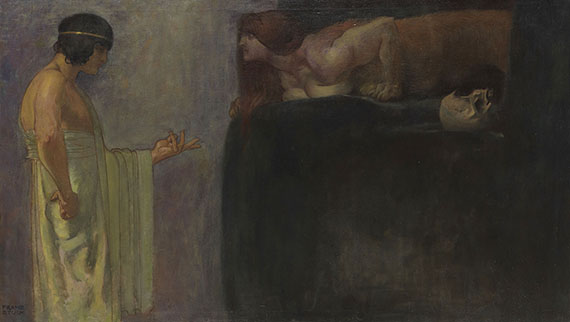Dictionary


Intimism
The term Intimisme refers to paintings representing daily life in the form of domestic scenes or interiors. Intimisme does not refer to genre painting in general, as it did in the 17th century, but rather to the work of Pierre Bonnard (1867-1947) and Édouard Vuillard (1868-1940), whose work is located between Post-Impressionism and Symbolism, in art historical terms. The Intimisme of the 1890s was identified by André Gide, who noticed an intimate, subdued tone in some of Édouard Vuillard’s paintings. Whilst Vuillard remained loyal to Intimisme, Pierre Bonnard, the second key representative of this art form, developed an extroverted style, and then later returned to the subtle effectiveness of his early Intimisme painting. Although Bonnard and Vuillard belonged to the Symbolist artists’ group Nabis, both were less interested in its mysticism than Paul Sérusier’s ideas about painting techniques and use of colour. The artists transferred these ideas onto canvas, portraying bourgeois interior spaces of particular tranquillity and depth. The intimate character of these interiors was a key characteristic of Intimisme, and both artists also successfully expressed this in their exterior scenes. In addition to possessing a special atmosphere, Intimisme paintings were characterised by a strong emphasis on decorative elements, a common feature of late 19th century art. The surface pattern spanned space and figures, lending the Intimist works an artistically exaggerated, ornamental character.
The term Intimisme refers to paintings representing daily life in the form of domestic scenes or interiors. Intimisme does not refer to genre painting in general, as it did in the 17th century, but rather to the work of Pierre Bonnard (1867-1947) and Édouard Vuillard (1868-1940), whose work is located between Post-Impressionism and Symbolism, in art historical terms. The Intimisme of the 1890s was identified by André Gide, who noticed an intimate, subdued tone in some of Édouard Vuillard’s paintings. Whilst Vuillard remained loyal to Intimisme, Pierre Bonnard, the second key representative of this art form, developed an extroverted style, and then later returned to the subtle effectiveness of his early Intimisme painting. Although Bonnard and Vuillard belonged to the Symbolist artists’ group Nabis, both were less interested in its mysticism than Paul Sérusier’s ideas about painting techniques and use of colour. The artists transferred these ideas onto canvas, portraying bourgeois interior spaces of particular tranquillity and depth. The intimate character of these interiors was a key characteristic of Intimisme, and both artists also successfully expressed this in their exterior scenes. In addition to possessing a special atmosphere, Intimisme paintings were characterised by a strong emphasis on decorative elements, a common feature of late 19th century art. The surface pattern spanned space and figures, lending the Intimist works an artistically exaggerated, ornamental character.
Offers
Headquarters
Joseph-Wild-Str. 18
81829 Munich
Phone: +49 89 55 244-0
Fax: +49 89 55 244-177
info@kettererkunst.de
Louisa von Saucken / Undine Schleifer
Holstenwall 5
20355 Hamburg
Phone: +49 40 37 49 61-0
Fax: +49 40 37 49 61-66
infohamburg@kettererkunst.de
Dr. Simone Wiechers / Nane Schlage
Fasanenstr. 70
10719 Berlin
Phone: +49 30 88 67 53-63
Fax: +49 30 88 67 56-43
infoberlin@kettererkunst.de
Cordula Lichtenberg
Gertrudenstraße 24-28
50667 Cologne
Phone: +49 221 510 908-15
infokoeln@kettererkunst.de
Hessen
Rhineland-Palatinate
Miriam Heß
Phone: +49 62 21 58 80-038
Fax: +49 62 21 58 80-595
infoheidelberg@kettererkunst.de
We will inform you in time.




